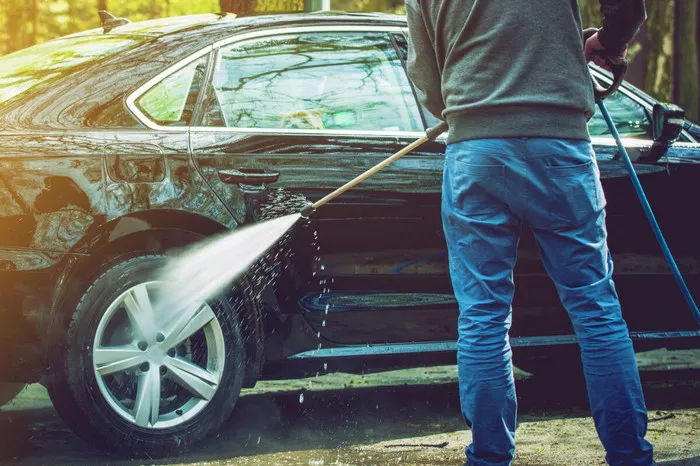Maintaining the cleanliness of your car is not just about aesthetics; it also contributes to its longevity and resale value. One key aspect of car cleaning is using the right pressure when washing. Pressure washing your vehicle can efficiently remove dirt, grime, and other contaminants, but using the wrong pressure can potentially damage the paint or delicate parts of your car. Finding the optimal PSI (pounds per square inch) for your car cleaning needs is crucial. In this comprehensive guide, we’ll delve into everything you need to know to determine the ideal PSI for cleaning your car effectively and safely.
Understanding the Importance of PSI
Before diving into the specifics of determining the ideal PSI for cleaning your car, it’s essential to understand why PSI matters in the first place. PSI refers to the amount of pressure exerted by a pressure washer’s water stream. Using the correct PSI ensures thorough cleaning without causing damage to the vehicle’s paint, trim, or underlying surfaces.
Factors Influencing the Ideal PSI
Several factors come into play when determining the appropriate PSI for washing your car:
1. Type of Dirt and Grime: The level of dirt and grime on your car’s surface influences the required pressure. Stubborn dirt may necessitate higher PSI, while lighter contamination may be effectively removed with lower pressure.
2. Paint Condition: The condition of your car’s paint is crucial. Older or delicate paint may be more susceptible to damage from high-pressure washing, requiring a lower PSI setting.
3. Type of Surface: Different parts of your car may require varying levels of pressure. For instance, delicate surfaces such as the windshield or mirrors may need lower PSI, while tougher areas like the wheels or undercarriage can withstand higher pressure.
4. Type of Pressure Washer: The type and power of your pressure washer also affect the PSI. Gas-powered washers typically offer higher PSI levels compared to electric ones, providing more versatility but requiring caution when cleaning.
Determining the Right PSI for Your Car
Now that we’ve established the significance of PSI and the factors influencing its determination, let’s explore how to find the ideal PSI for cleaning your car:
1. Consult Your Owner’s Manual
Your car’s owner’s manual often provides recommendations and precautions for washing your vehicle. Look for guidelines regarding pressure washing and any specific PSI recommendations from the manufacturer.
2. Start with Lower Pressure
It’s generally advisable to start with a lower PSI setting and gradually increase if necessary. Begin with a PSI between 1200 and 1900, especially if you’re unsure about your car’s tolerance to pressure.
3. Test on a Small Area
Before proceeding to wash the entire car, test the selected PSI on a small inconspicuous area to observe the impact on the paint and surface. This allows you to gauge the effectiveness and safety of the pressure level.
4. Adjust as Needed
Based on the results of your test, adjust the PSI accordingly. If the dirt isn’t adequately removed, gradually increase the pressure, ensuring not to exceed the safe limits for your vehicle.
5. Pay Attention to Feedback
Keep an eye (and ear) out for any signs of damage or strain on the vehicle, such as paint peeling or unusual sounds during washing. Adjust the pressure immediately if you notice any adverse effects.
Conclusion
Determining the ideal PSI for cleaning your car is a crucial step in maintaining its appearance and structural integrity. By considering factors such as the type of dirt, paint condition, surface type, and pressure washer capabilities, you can ensure effective cleaning while minimizing the risk of damage. Remember to consult your owner’s manual, start with lower pressure, test on a small area, and adjust as needed to find the perfect balance between cleanliness and safety. With the right PSI and proper technique, you can keep your car looking pristine for years to come.
FAQs
Q1. What PSI is safe for washing my car?
A1: The ideal PSI for washing your car typically falls within the range of 1200 to 1900. However, it’s crucial to consider factors such as the type of dirt, paint condition, and surface type before determining the exact pressure. Starting with a lower PSI and gradually increasing while monitoring for any adverse effects is recommended.
Q2. Can using high PSI damage my car’s paint?
A2: Yes, using excessively high PSI can potentially damage your car’s paint, especially if it’s older or in poor condition. High-pressure water streams can strip away paint, cause scratches, or even dent the surface. It’s essential to strike a balance between sufficient pressure for effective cleaning and avoiding excessive force that may harm the paintwork.
Q3. Should I use different PSI levels for different parts of my car?
A3: Yes, varying PSI levels may be necessary for different parts of your car. Delicate surfaces such as the windshield or mirrors may require lower pressure to prevent damage, while tougher areas like the wheels or undercarriage can tolerate higher pressure. Adjusting the PSI according to the specific needs of each surface ensures thorough cleaning without compromising safety.

